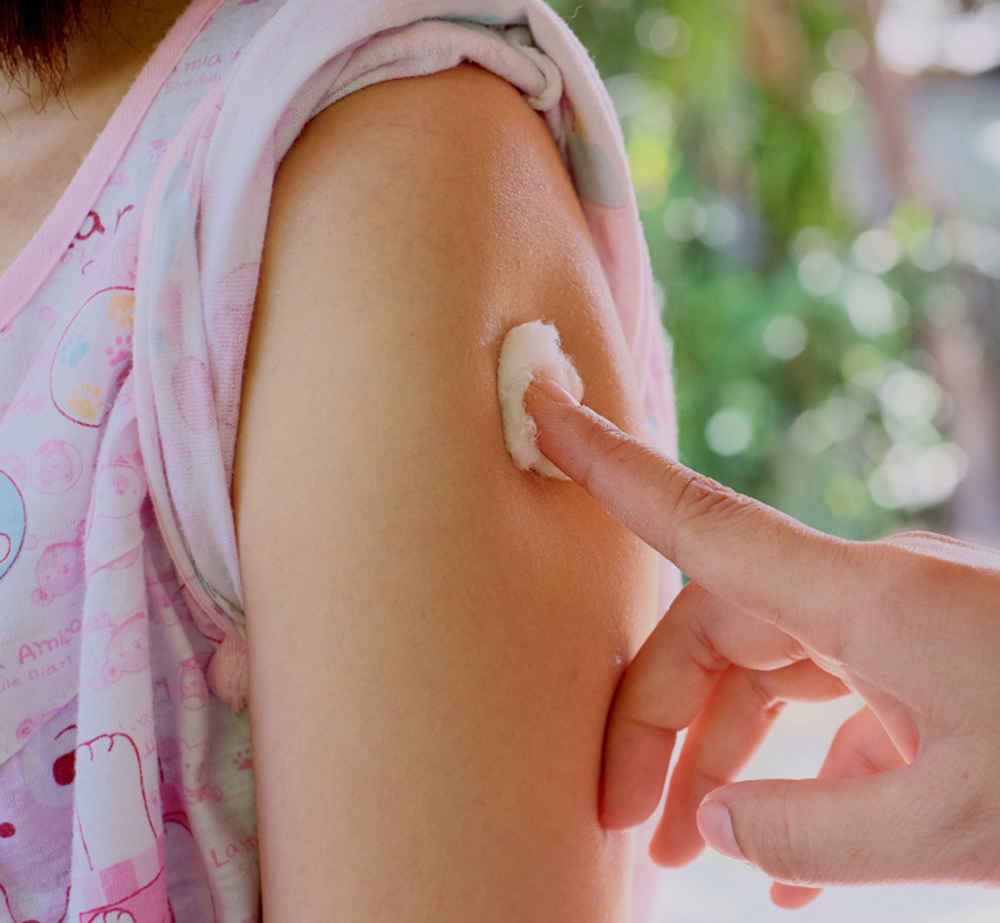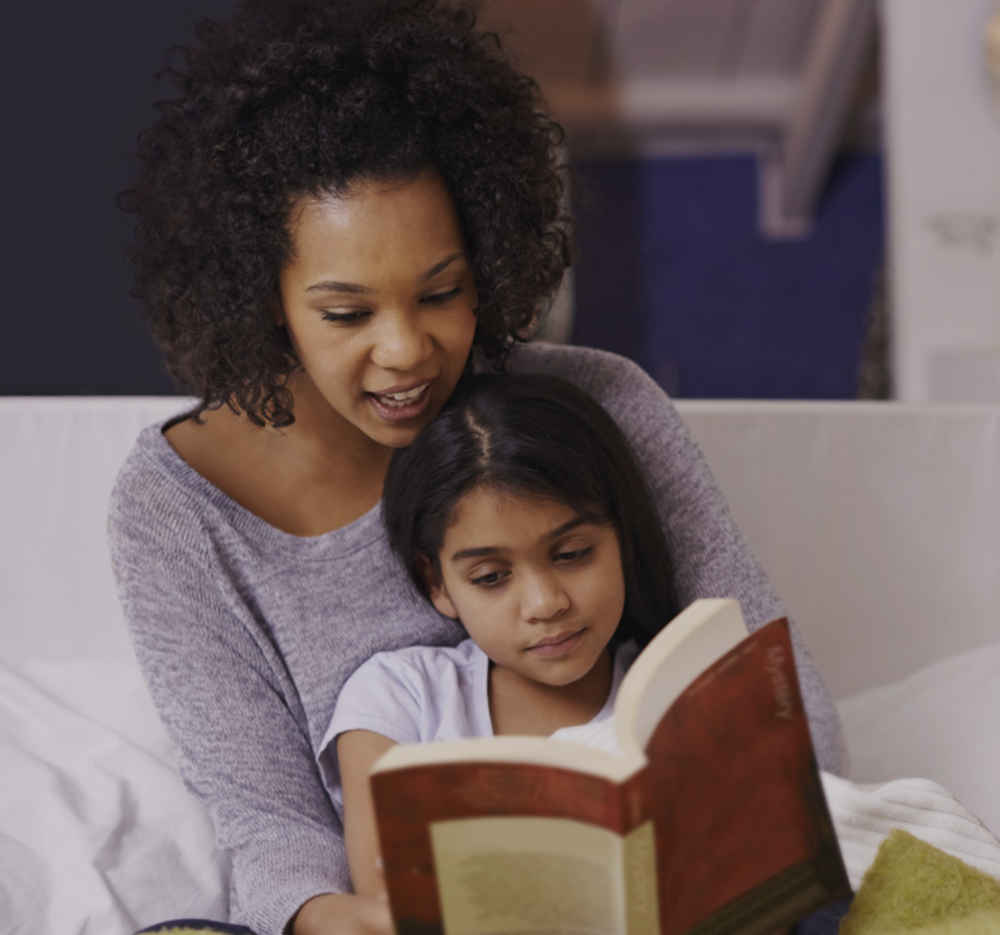410-721-2273
Colds (Upper Respiratory Infections, or URIs)
What is a cold?
A cold or upper respiratory infection is an infection of the nose and throat caused by a virus.
Symptoms of a cold may include:
- runny or stuffy nose
- fever
- sore throat
- sometimes a cough or hoarse voice
- red or watery eyes
- swollen lymph nodes in the neck.
What is the cause?
The cold viruses are spread from one person to another by hand contact, coughing, and sneezing. Colds are not caused by cold air or drafts. Because there are up to 200 viruses that cause colds, most healthy children get at least 6 colds a year.
Many children and adults have a runny nose in the wintertime when they breathe cold air. This is called vasomotor rhinitis. The nose usually stops running within 15 minutes after a person comes indoors. It does not need treatment and has nothing to do with cold or an infection.
Chemical rhinitis is a dry stuffy nose that results from using decongestant nosedrops or spray too often and too long (longer than 1 week). It will be better a day or two after you stop using the nosedrops or spray.
How long does it last?
Usually the fever lasts 2 or 3 days. The sore throat may last 5 days. Nasal discharge and congestion may last up to 2 weeks. A cough may last 3 weeks.
Colds are not serious. Between 5% and 10% of children develop a bacterial infection from a cold. Watch for signs of a bacterial infections such as earaches, yellow drainage from the eyes, sinus pressure or pain (often means a sinus infection), or rapid breathing (often a sign of pneumonia). Yellow or green nasal discharge are a normal part of the body's reaction to a cold. As an isolated symptom, they do not mean your child has a sinus infection. Suspect a sinus infection only if your child complains of pressure, pain or swelling over a sinus and it doesn't improve with nasal washes.
If you have a young infant, make sure that the she does not get dehydrated. A blocked nose can interfere so much with the ability to suck that dehydration can occur.
How can I take care of my child?
Not much can be done to affect how long a cold lasts. However, we can relieve many of the symptoms. Keep in mind that the treatment for a runny nose is quite different from the treatment for a stuffy nose.
Treatment for a runny nose with a lot of discharge.
The best treatment is clearing the nose for a day or two. Sniffing and swallowing the secretions is probably better than blowing because blowing the nose can force the infection into the ears or sinuses. For younger babies, use a soft rubber suction bulb to remove the secretions gently.
Put petroleum jelly around the nostrils to protect them from irritation.
Nasal discharge is the nose's way of getting rid of viruses. Antihistamines are not helpful unless your child has a nasal allergy.
Treatment for a dry or stuffy nose with only a little discharge or dried yellow-green mucus.
Most stuffy noses are blocked by dry mucus. Blowing the nose or suction alone cannot remove most dry secretions. Using nosedrops and then suctioning or blowing out the fluid in the nose can help. This is called a nasal wash.
Nosedrops of warm tap water or saline solution are better than any medicine you can buy for loosening up mucus. To make normal saline nosedrops, mix 1/2 teaspoon of table salt in 8 ounces of water. Make up a fresh solution every few days and keep it in a clean bottle. Use a clean eyedropper to put drops into the nose. Water can also be dripped in using a wet cotton ball.
- For the younger child who cannot blow his nose:
Place 3 drops of warm water or saline in each nostril. (If your child is younger than 1 year old, use only 2 drops at a time and do 1 nostril at a time). After 1 minute use a soft rubber suction bulb to suck out the loosened mucus gently. To remove secretions from the back of the nose, you will need to seal off both nasal openings completely with the tip of the suction bulb on one side and your finger closing the other side. If you cause a nosebleed, you are putting the tip of the suction bulb in too far. You can get a suction bulb at the drugstore for about $2. Try to buy a short, stubby one with a clear-plastic mucus trap.
- For the older child who can blow his nose:
Use 3 drops in each nostril while your child is lying on his back on a bed with his head hanging over the side. Wait 1 minute for the water to soften and loosen the dried mucus. Then have your child blow his nose. This can be repeated several times for complete clearing of the nasal passages.
- Mistakes in using warm-water or saline nosedrops:
The main errors are using only 1 drop of water or saline (except for infants), not waiting long enough for secretions to loosen up before suctioning or blowing the nose, and not repeating the procedure until the breathing is easy. The front of the nose can look open while the back of the nose is all gummed up with dried mucus. Make sure that the nose is suctioned or blown after the warm-water nosedrops are put in.
Use the nasal wash at least 4 times a day or whenever your child can't breath through the nose.
- The importance of clearing the nose of a young infant.
A child can't breathe through the mouth and suck on something at the same time. If your child is breast-feeding or bottle-feeding, you must clear his nose out so he can breathe while he's sucking. It is also important to clear your infant's nose before you put him down to sleep.
Treatment for other symptoms of colds.
- Fever: Use acetaminophen or ibuprofen for aches or mild fever (over 102°F, or 38.9°C).
- Sore throat: Use hard candies for children over 6 years old and warm chicken broth for children over 1 year old.
- Cough: Use cough drops for children over 6 years old. Use 1/2 to 1 teaspoon of honey for children over 1 year old. If not available, you can use corn syrup. Use a humidifier to make the air in the room less dry.
- Red eyes: Rinse frequently with wet cotton balls.
- Poor appetite: Encourage drinking fluids by letting the child choose what to drink.
Prevention of colds.
A cold is caused by direct contact with someone who already has a cold. Over the years we are all exposed to many colds and develop some immunity to them. Teach children to wash hands often, especially after coming in contact with someone who has a cold.
Complications from colds are more common in children during the first year of life. Try to avoid exposing young babies to other children or adults with colds, day care nurseries, and church nurseries.
A humidifier prevents dry mucous membranes, which may be more susceptible to infections.
Vitamin C, unfortunately, has not been shown to prevent or shorten colds. Large doses of vitamin C (for example, 2 grams) cause diarrhea.
Common mistakes in treating colds.
Most over-the-counter cold medicines are worthless. In children under 2 years of age, they can cause serious side effects and should never be used. Antihistamines do not help cold symptoms. Especially avoid drugs that have several ingredients because there is a greater chance of side effects from these drugs. Nothing can make a cold last a shorter time. Use acetaminophen (Tylenol) or ibuprofen (Advil) for a cold only if your child also has a fever, sore throat, headache, or muscle aches. Children under 18 years of age should not take aspirin or products containing salicylate because of the risk of Reye's syndrome unless recommended by a healthcare provider.
Do not give leftover antibiotics for uncomplicated colds because they have no effect on viruses and may be harmful.
Call 911
If you feel that your child needs immediate medical care.
Call our office immediately if:
(410) 721-2273
- Breathing becomes difficult AND no better after you clear the nose.
- Your child starts acting very sick.
Call us during office hours if:
- The fever lasts more than 3 days.
- The runny nose lasts more than 14 days.
- The eyes develop a yellow discharge.
- You can't unblock the nose enough for your infant to drink adequate fluids.
- You think your child may have an earache or sinus pain.
- Your child's sore throat last more than 5 days.
- You have other questions or concerns.
Written by B.D. Schmitt, MD, author of "Your Child's Health," Bantam Books.
This content is reviewed periodically and is subject to change as new health information becomes available. The information is intended to inform and educate and is not a replacement for medical evaluation, advice, diagnosis or treatment by a healthcare professional.
You May Also Like
Popular Resources | Make an Appointment • Locations • Refill Prescriptions





